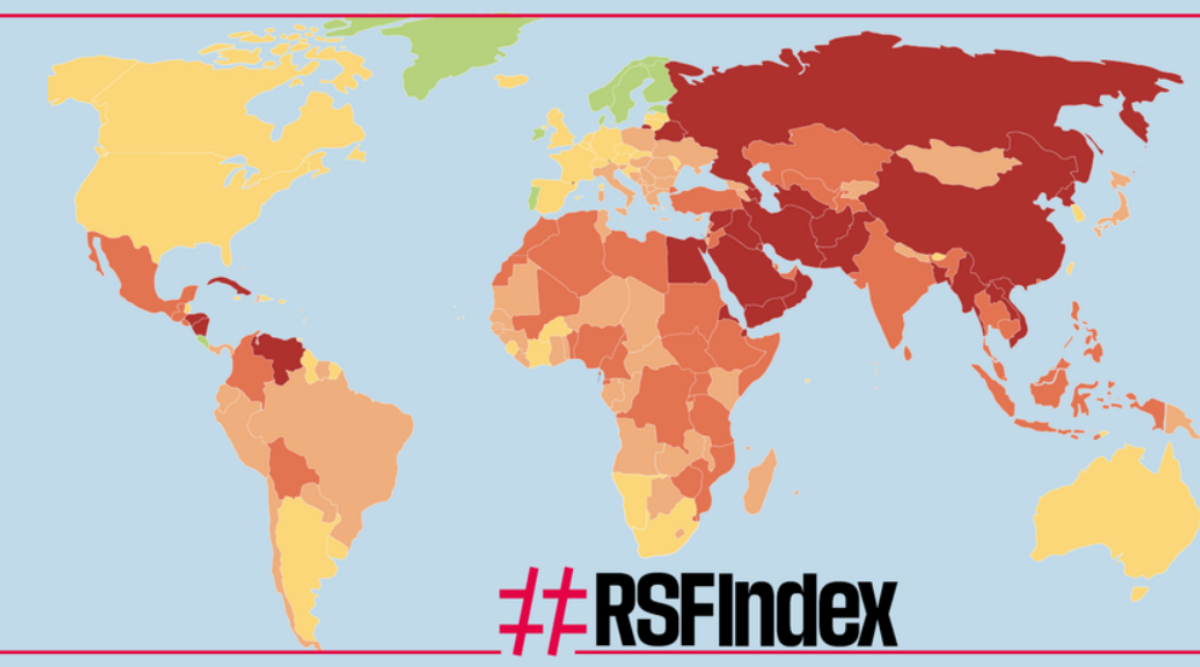Dr. Abhishek Atrey,
Air Pollution
Do you know that 7 million people die in the world every year due to Air Pollution and out of this half of the people die only in India and China. According to World Health Organization around 7 million people died in the year 2012 i.e. one in eight of total global deaths, as a result of air pollution exposure. This finding more than doubles previous estimates and confirms that air pollution is now the world’s largest single environmental health risk.
Reducing air pollution could save millions of lives. In particular, the new data reveal a stronger link between both indoor and outdoor air pollution exposure and cardiovascular diseases, such as strokes and ischaemic heart disease, as well as between air pollution and cancer. This is in addition to air pollution’s role in the development of respiratory diseases, including acute respiratory infections and chronic obstructive pulmonary diseases[iii].
This is a reality that 333 acres of forest land is diverted each day legally by the Ministry of Environment and Forest, Government of India for various projects. 13 of the 20 most polluted cities of the World are in India. According to World Bank environmental degradation is costing India 5.7% of its GDP[iv].
In the era of Industrial Revolution and with the help of newer and newer gadgets and machines, we started conquering the world, including its mountains, deserts, glaciers, atmosphere, water, deep seas and so on, but at the same time we failed to realize that all this led to breaking of mountains, draining of rivers, flooding of valleys, Clearing of forests, Change of land use, release of toxic gases into air and chemicals into the soil, pesticides onto the fields. For a long period we believed that any by-product of a chemical operation for which there was no profitable use was a waste and the most convenient, least expensive way of disposing of the said waste was up the chimney or down the river, but consequences followed quickly and we started witnessing Environmental Degradation, Air Pollution, Water Pollution, Soil Pollution, Loss of Biodiversity etc.
Water pollution:
Water, water, everywhere but not a drop to drink. Healthy populations can only develop when there are natural resources available to sustain them. Water is the most precious natural resource on our planet. It covers over 70% of the Earth’s surface, without it life on Earth would be non existent. Even then fresh water is emerging as one of the most critical natural resource issues facing pollution. By the year 2025, 48 countries with more than 2.8 billion people i.e. 35% of the projected global population in 2025 will be affected by water stress or scarcity. Within 50 years some 60,000 sq. km of groundwater aquifers in western and central Europe are likely to be contaminated with pesticides and fertilizers[v].
In 1951, the annual per capita availability of water in India was 5177 m3, which reduced to 1342 m3 by 2000. The Union Ministry of Water Resources has estimated the country’s water requirements to be around 1093 BCM for the year 2025 and 1447 BCM for the year 2050. With projected population growth of 1.4 billion by 2050, the total available water resources would barely match the total water requirement of the country. The facts indicate that India is expected to become ‘water stressed’ by 2025 and ‘water scarce’ by 2050[vi]. According to a report of Institute for Defense Studies and Analyses New Delhi, all of India’s major rivers are badly polluted and about 50 million cubic meters of untreated sewage goes into India’s coastal waters every year.
Disappearing Wetlands:
In our greed most of the natural lakes and ponds have got polluted as also encroached upon by us. Many of the ponds and reservoirs established by our forefathers have disappeared because of our greed and misdeeds. Numerous wetlands, duly protected by our ancestors, are only on the revenue records now. In our bid to have more and more energy for our ever increasing gadgets, we have plundered the riverine as well as lacustrine ecosystems. Damming and diversion of large volumes of river away from the original flow path has adversely affected the aquatic biota downstream as well as upstream. Even the terrestrial ecosystems bordering the original river bed are getting impacted significantly and substantial changes occur in the land use pattern both up and downstream of the dam site. We don’t know, this may lead to more frequent hydrological disasters, enhanced variability in rainfall and runoff, Already we are witnessing extensive reservoir sedimentation and pollution of lakes.
Indiscriminate Mining:
For the establishment of various developmental projects and housing projects, large quantities of raw material are extracted from terrestrial as well as aquatic systems. Mining for Bricks, cement, coal, minerals, and other materials has rendered large tracts of previously fertile land completely barren. Burning of fossil fuels, manufacture of cement and other similar activities introduce large quantities of pollutants in to the atmosphere.
Disposal of solid and hazardous waste:
Municipal landfills & waste incinerators are almost full; not in a position to receive any more wastes. Underground aquifers and drinking water wells seriously contaminated in many countries by leachates from hazardous wastes dumped in unlined lagoons, industrial pits and unsecured, open landfills. Agricultural runoffs containing chemical fertilizers and pesticides have polluted streams and lakes. Contaminated aquifers a critical environmental problem in rapidly developing countries in Asia, Africa and Latin America, because of faulty means of hazardous waste disposal.
Chemical nuisance and loss of biodiversity:
Globally, over 50,000 chemical substances are produced, transported and consumed today, with several thousand new chemicals entering the marketplace each year. A vast majority of compounds have not been adequately tested for their harmful effects on human population. A large number of synthetic pesticides are used in agricultural production and for household purposes. These include insecticides, herbicides and fungicides employed to eradicate harmful insects, weeds, fungi and other microbial agents. By their very intrinsic nature of being chemically toxic to animal and plant species, these pesticide products pose significant health risks to a number of organisms, including human beings. Genetic damage at the chromosome level in either chromosome number or chromosome structure measured as CA or MN assays are useful biomarkers of environmental genotoxicity testing. The chromatid and chromosome breaks were frequently observed. Our data suggested that chronic exposure to endosulfan results in an increased oxidative stress, which was reflected by increase in Lipid Peroxidation in erythrocytes, in a time and concentration dependent manner. Rate of biodiversity loss has accelerated by factors of 100 to 1,000 times since human beings first evolved on earth. At present rates of biodiversity loss, more than 25% of all species on earth may become extinct within the next half century.
Main causes for the loss of biodiversity are encroachment and destruction of forested areas, savanna grasslands, freshwater wetlands, marine resources and other natural ecosystems; high consumption rates of natural resources; introduction of alien invasive species; global climate change; air pollution and acid precipitation and widespread use of toxic substances and pesticides.
Direct impact of Loss of biodiversity on human health is the disruption of natural ecosystems, whereby local and regional food webs are permanently destroyed, leading to decreased forest and agricultural productivity and decline of marine fisheries. Such shortfalls of traditional food resources in many regions of the world could lead to serious malnutrition, illnesses and death among human populations. Indirect impacts to human health occur through loss of many valuable organisms, including hitherto undiscovered sources of plant, animal and microbial species.
India is one of the 17 mega-biodiversity countries. It has some of the world’s most biodiverse regions from Ladakh to Kanyakumari. Although with only 2.4% of the global land area and 4% of water, it accounts for 7 to 8% of the recorded species of the world. 45,968 plant, 91,364 animal & 5,650 microbial species documented so far. Home to 7.6% of mammalian, 12.6% avian, 6.2% reptilian, 4.4% amphibian, 11.7 % fish, and 6.0% flowering plant species of the world. India lies mostly within the Indo-Malaya ecozone; upper reaches (> 2000m) of the Himalayas falling in the Palearctic ecozone.
Between 1960 and 2000, reservoir storage capacity quadrupled; water stored behind large dams about six times the water flowing through rivers at any one time. Most of the terrestrial biosphere has been altered by human residence and agriculture. Less than a quarter of Earth’s ice-free land is wild; only 20% of this is forests and > 36% is barren. Some 35% of mangroves have been lost in the last two decades in countries where adequate data are available (encompassing about half of the total mangrove area). Already 20% of known coral reefs have been destroyed and another 20% degraded in the last several decades. Virtually all of Earth’s ecosystems have now been dramatically transformed through human actions. The distribution of species on Earth is becoming more homogenous. Firstly, endemic species experiencing higher rates of extinction. Since the 1970s the world’s vertebrate populations declined by 30%. Today one-fifth of all vertebrates are threatened with extinction. Secondly, high rates of invasion by exotic species into new ranges accelerating with growing trade and faster transportation.
Development of Environmental Laws:
The Economic and Social Council of the United Nations passed a resolution on 30.7.1968 to convene an International Conference on problems of human environment, which was followed by resolution dated 3.12.1968 and in furtherance of these resolutions UN Conference on Human Environment took place on 5th and 6th June 1972 at Stockholm, which set forth a duty on every person to protect environment for present and future. India was also a participating and addressing country in Stockholm conference and in order to give effect to the objectives of Stockholm Conference India inserted Art. 48A and 51A (g) in our Constitution by 42nd Amendment Act, 1976 thereby making it a directive principle of State policy to endeavor to protect, safeguard and improve environment, forest, wildlife, lakes and rivers and to have compassion for living creatures.
The Water (Prevention and Control of Pollution) Act, 1974, the Forest (Conservation) Act, 1980, the Air (Prevention and Control of Pollution) Act, 1981 and Environment (Protection) Act, 1986 were enacted by Indian Parliament to give effect to the resolutions of 1972 Conference.
On 9th May 1992 UN Convention on Climate Change was held at Rio De Janerio for further strengthening efforts of the world for protection of environment and thereafter Earth Summit was held at Johannesburg in 2002 for the same purpose.
In M.C. Mehta V. Union of India, 1987 (1) SCC 965 for the first time it was held by the Hon’ble Supreme Court that right to live in pollution free environment is an integral part of our fundamental right to life guaranteed by Article 21 of the Constitution of India and since then that principle is being followed by the Hon’ble Supreme Court and different courts in India.
To give effect to Stockholm conference 1972 and Rio conference 1992, Government of India enacted National Environment Tribunal Act, 1995 and National Environment Appellate Authority Act, 1997 but since both these Acts failed to achieve its objectives, the Law Commission in its 186th Report in 2003 recommended to consolidate both these Acts and to form a new Act with certain special features. As a result National Green Tribunal Act, 2010 was passed by the Parliament in 2010 after repealing both the aforesaid Acts and it came into force on 18.10.2010 and National Green Tribunal was also established by Ministry of Environment, Forest and Climate Change vide Notification dated 18.10.2010.
Basic features of our environmental laws:
- Environment Protection Act, 1986
This Act is applicable to whole India including J & K. Central Government shall have all such powers as to take all such measures as it deems necessary or expedient for the purpose of protecting and improving the quality of the environment and preventing, controlling and abating environmental pollution. Section 7 provides that no person carrying on any industry, operation or process shall discharge or emit any environment pollutant in excess of standards prescribed. Section 8 provides that no person shall handle hazardous substance except in accordance with procedure and safeguards prescribed. Section 15 provides that whoever fails to comply with or contravenes any of the provisions of this Act or Rules made or orders or directions issued under this Act shall be liable for imprisonment up to 5 years or fine up to Rs.1 lakh or both and if failure or contravention continues additional fine up to Rs.5000/- per day and if contravention continues beyond one year after such conviction up to 7 years. Under powers of this Act Central Government issued several Rules for protection of environment such as:
- Environment Protection Rules, 1986 – laid down standards for emission and discharge of environmental pollutants from industry, operation or process as specified in schedule I to VII
- Manufacture, Storage, and Import of Hazardous Chemical Rules, 1989 – any occupier of any of total 684 hazardous chemicals identified under these Rules, shall provide evidence to show that he has identified major accident hazards and taken adequate steps to prevent such major accidents and to limit their consequences to persons and environment and shall provide to persons working on the site with information, training and equipments including antidotes necessary to ensure their safety
- Bio Medical Waste (Management and Handling) Rules, 1998 – for handling bio medical waste – issued under section 6, 8 and 25 of EP Act – Now in suppression of these Rules new draft Rules have been notified on 28.3.2016
- Noise Pollution (regulation and Control) Rules, 2000 – for laying standard and regulation of noise pollution-
- Municipal Solid Waste (Management and Handling) Rules, 2000 – for handling municipal solid waste – Now replaced by Solid Waste Management Rules, 2015 notified on 8.4.2016
- Ozone Depleting Substances (Regulation and Control) Rules, 2000
- Batteries (Management and Handling) Rules, 2001
- Hazardous and Other Waste (Management and Transboundary) Rules, 2015 – notified on 4.4.2016 in suppression of Hazardous Waste (Management, Handling and Transboundary) Rules, 2008
- Plastic Waste Management Rules, 2016 – notified on 18.3.2016 in suppression of Plastic Waste (Management and Handling) Rules, 2011
- E-Waste Management Rules, 2015 – notified on 23.3.2016 in suppression of E-Waste (Management and Handling) Rules, 2011
- Construction and demolition Waste Management Rules, 2016 – notified on 29.3.2016 in suppression of Municipal Solid Waste (Management and Handling) Rules, 2000
- Wetlands (Conservation & Management) Rules, 2016 – draft Rules notified on 31.3.2016 in suppression of Wetlands (Conservation & Management) Rules, 2010
- Chemical Accidents (Emergency, Planning, Preparedness and Response) Rules, 1996
- Environment Impact Assessment Notification, 2006 – was issued on 14.9.2006 to make it mandatory to take prior EIA before issuing Environment Clearance for certain activities specified in its schedule such as mining etc. and the said notification is amended time to time.
- Coastal Regulation Zone Notification, 2011 – was issued on 6.1.2011 to make regulate coastal areas and this notification is amended time to time.
- The Water (Prevention & Control of Pollution) Act, 1976
Since the subject matter was relatable to entry 6 and 17 of list II of 7th Schedule of the Constitution, the Parliament had no powers to pass legislation on the subject unless Legislatures of 2 or more States pass resolution in pursuance of Article 252 of the Constitution empowering Parliament to pass such legislation. Legislatures of Assam, Bihar, Gujrat, Haryana, Himachal Pradesh, Jammu & Kashmir, Karnataka, Kerala, Madhya Pradesh, Rajasthan, Tripura, Mysore and West Bengal have passed such resolutions, therefore this Act was passed by Parliament. This Act constitutes Central Pollution Control Board and State Pollution Control Boards. Section 24 provides that no person shall cause or permit any poisonous, noxious or polluting matter, as specified, directly or indirectly into any stream or well or sewer or on land without permission of State Board. Section 25 provides restrictions on new outlets and new discharges of Sewage or trade effluent into any stream, well, sewer or land without previous consent of State Board. Section 26 provides that even existing discharges shall have to take permission. This Act provides penalties upto 7 years of imprisonment.
- The Air (Prevention & Control of Pollution) Act, 1981
Section 21 provides that no person shall establish or operate any industrial plant in an air pollution control area without previous consent of State Board. Section 22 provides that industries will not carry out emissions of air pollutant in excess of standards laid down by SPCB. Section 31 A provides that a board in exercise of Powers and performance of its functions under this Act may issue directions to any person, officer or authority including closure, prohibition or regulation of any industry, operation or process or stoppage or regulation of supply of electricity or water or any other service. Section 37 provides penalties up to 7 years and fine up to Rs.10,000/- per day.
- Forest (Conservation) Act, 1980
Section 2 of this Act provides that no State Government, without prior approval of Central Government, shall make any order directing that any reserved forest area shall cease to be reserved, or any forest land may be used for non forest purpose, or any forest land may be given to a private person, or any forest land may be cleared of trees. It can be done only after Stage I and Stage II forest clearances by Ministry of Environment and Forest then forest clearance by State Government. Central Government also framed National Forest Policy 1998 under this Act and for protection of trees in non forest areas Tree Protection Acts have been enacted in different States.
- Biological Diversity Act, 2002 to protect Biodiversity in India
- Wildlife Protection Act, 1972 and policy and rules made there under
- Mines and Minerals (Development and Regulation) Act, 1957 and State policies and rules made there under
- National Green Tribunal Act, 2010
It is a landmark Act of its kind in the world. This Act established National Green Tribunal in India which is most powerful Environmental Court or Tribunal anywhere in the world. Only Australia and New Zealand have such Tribunals but they are also not powerful as ours. Section 14 of this Act provides that NGT shall have Original Jurisdiction in all civil cases where
- a substantial question relating to environment (including enforcement of any legal right relating to environment) is involved and such question arises out of the implementation of the enactments specified in Schedule I.
- Disputes arising out of aforesaid questions and settle such disputes
- For adjudication of disputes under this section limitation is of 6 months from the date on which cause of action for such dispute first arose, however this period may be further extended but not exceeding 60 days.
Section 15 provides original Jurisdiction to provide compensation to victims of pollution and restitution of property and environment. Section 16 provides that appellate Jurisdiction of NGT. However Section 18 (2) provides Locus standi of the person who can file application under section 14 and 15 of the Act for any relief or compensation or settlement of disputes, but the word “person aggrieved” was very widely interpreted by the Tribunal and now virtually any person can file an application before the Tribunal. Section 26 provides that for failure to comply any award, order or decision of the Tribunal imprisonment upto 3 years or fine upto Rs.10 Crore or Rs.25,000/- per day for continuing offence can be imposed by the Tribunal on individuals and in case of company fine may extend upto Rs. 25 Crore and additional fine upto Rs.1 lakh per day if failure continues.
Principles of Environment Law:
While deciding environmental issues three principles are very widely used by the Tribunal and Courts viz. Sustainable Development: Development that seeks to meet the needs of present generation without compromising the ability of future generations to meet their own needs and encompasses economic, natural and social capital for present and future generations.
Precautionary Principle: Anticipation of harm before it occurs. Even if cause –effect relationship not fully established scientifically in terms of effect on human health and environment such activity should not be taken. In such cases burden of proof shifts on project proponent to prove that the activity is not likely to cause harm or damage. Lack of full scientific certainty of a consequence will not be used as a reason for postponing cost-effective measures for restoring environmental degradation.
Polluter Pays Principle: PPP invokes the principle of absolute liability arising from inherently dangerous activities or products that are likely to result in harm to another regardless of protection. Negligence is not required to be proven. Pollution is a civil wrong and Polluter must pay. PPP requires payment of cost not only of restitution of environment but also compensating the individual sufferers.
Scope of National Green Tribunal:
The NGT is continuously enhancing its scope and jurisdiction both in terms of locus standi as well as subject matter. Definition of aggrieved person has been stretched so far on the basis of several judgments passed by Hon’ble Supreme Court while dealing with locus of petitioner in public interest litigations before Hon’ble Supreme Court or before Hon’ble High Courts under Article 32 or 226 of the Constitution. Now any person from any corner of India can file any application or appeal before NGT without having any relation with the place of affected area and there are so many examples of this. The definition of aggrieved persons as given in NGT Act or under any Act specified in Schedule-I of the NGT Act left too away and had become meaningless.
Meanings of the phrases “Environmental Issue” and “substantial question relating to environment” were so widely interpreted by the NGT itself that it covered almost every sphere of life. NGT did not remain confined only to the matters falling under the scheduled Acts but it entertained and disposed several matters which does not relate to the scheduled Acts in any manner and the orders and judgments passed by NGT in this behalf were also upheld by the Hon’ble Supreme Court. In Wilfred judgment NGT has given to itself all powers in relation to environmental issues as are available to High Courts under Article 226 of the Constitution and in fact NGT has become single High Court for the entire country in relation to matters related to environment and it remains least bothered about parallel proceedings pending before High Courts for the same issue.
The author is the senior advocate at Supreme Court of India.
[1] http://www.bbc.com/news/science-environment-35568249 dated 16.10.16
[1] http://www.ibtimes.co.uk/air-pollution-causes-7-million-deaths-per-year-lung-cancer- strokes-heart-disease-1559673 dated 16.10.16
[1] http://www.who.int/mediacentre/news/releases/2014/air-pollution/en/ dated 16.10.2016
[1] http://www.worldbank.org/en/news/press-release/2013/07/17/india-green-growth-necessary-and-affordable-for-india-says-new-world-bank-report dated 16.10.2016
[1] http://www.waternunc.com/gb/pws2025.htm dated 16.10.2016
[1] Water Security for India: Institute for Defense Studies and Analyses New Delhi
[i] http://www.bbc.com/news/science-environment-35568249 dated 16.10.16
[ii] http://www.ibtimes.co.uk/air-pollution-causes-7-million-deaths-per-year-lung-cancer- strokes-heart-disease-1559673 dated 16.10.16
[iii] http://www.who.int/mediacentre/news/releases/2014/air-pollution/en/ dated 16.10.2016
[iv] http://www.worldbank.org/en/news/press-release/2013/07/17/india-green-growth-necessary-and-affordable-for-india-says-new-world-bank-report dated 16.10.2016
[v] http://www.waternunc.com/gb/pws2025.htm dated 16.10.2016
[vi] Water Security for India: Institute for Defense Studies and Analyses New Delhi











